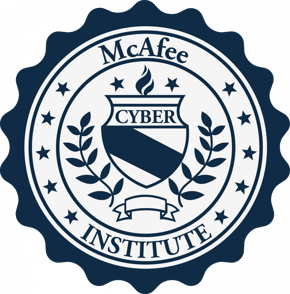Unveiling the Future: Top Emerging Technologies in Investigations and Intelligence
The world of investigations and intelligence is rapidly evolving, with cutting-edge technologies providing new tools and techniques for professionals in the field. As a leader in this domain, McAfee Institute offers comprehensive Board Certifications to help you stay ahead of the curve. In this blog post, we will explore some of the top emerging technologies that are transforming the way we gather, analyze, and apply intelligence.
AI in Investigations and Intelligence
Artificial intelligence (AI) has become a game-changer in the realm of investigations and intelligence. Machine learning algorithms have the ability to process vast quantities of data, identifying patterns and drawing conclusions much more quickly than human analysts. AI can be used to predict criminal activities, streamline intelligence gathering, and even help law enforcement agencies allocate resources more effectively.
Natural language processing (NLP), a subset of AI, enables machines to analyze and interpret human language, making it possible to sift through social media data, written reports, and other forms of unstructured data for valuable insights. These advances in AI are leading to more accurate assessments of threats and a better understanding of criminal behavior, revolutionizing the field of investigations and intelligence.
Digital Forensic Technologies
As our reliance on technology grows, so does the importance of digital forensics in investigations. Digital forensic tools have advanced significantly in recent years, allowing investigators to efficiently recover, analyze, and preserve data from a wide range of devices, including smartphones, computers, and IoT systems.
Investigators can now uncover hidden data, retrieve deleted files, and piece together digital trails that might otherwise have been lost. Digital forensics also plays a critical role in cybersecurity, helping organizations identify vulnerabilities, track down cybercriminals, and prevent future attacks.
Cyber Intelligence and Investigation
Cyber threats are continually evolving, necessitating specialized cyber intelligence and investigation skills. Professionals in this field employ advanced technologies like blockchain and big data analysis to detect, prevent, and respond to cyberattacks. Blockchain technology, for example, offers a secure and transparent means of tracking transactions, making it invaluable in the fight against cybercrime.
Big data analysis allows investigators to process massive amounts of data from various sources, identifying patterns and correlations that could reveal potential threats or criminal activity. By combining these technologies with traditional investigative techniques, cybersecurity professionals can stay ahead of cybercriminals and protect sensitive information.
Geospatial Intelligence Tools
Geospatial intelligence (GEOINT) is becoming increasingly important in the age of digital connectivity. Advanced tools for mapping, satellite imagery analysis, and geographical data integration enable investigators to identify patterns, track suspects, and analyze crime scenes with unprecedented precision.
Using geospatial intelligence, investigators can monitor real-time movements of people and vehicles, predict the locations of future crimes, and even assess environmental factors that may contribute to criminal activity. This wealth of information is invaluable for law enforcement agencies and intelligence professionals, providing a more comprehensive understanding of the situations they face.
Social Media Monitoring for Investigations
The rise of social media has created a wealth of information for investigators. Advanced monitoring tools and open-source intelligence (OSINT) techniques allow professionals to track activities, gather intelligence, and even predict criminal behavior. Social media platforms can provide real-time data on suspects, their networks, and their movements, making it an essential source of information for modern investigations.
As privacy concerns grow, it's important for investigators to strike a balance between effective intelligence gathering and respecting individual rights. By leveraging emerging technologies and maintaining high ethical standards, investigators
can ensure they stay within the bounds of the law while still gathering the necessary information to solve cases and protect public safety.
Facial Recognition for Investigations
Facial recognition technology has made significant strides in recent years, making it an invaluable tool for investigators. Law enforcement agencies can now use this technology to identify suspects, locate missing persons, and even track the movements of known criminals. By analyzing images from security cameras, social media, and other sources, facial recognition software can quickly and accurately match faces to databases of known individuals.
While facial recognition technology offers many benefits, it also raises concerns about privacy and the potential for misuse. As with any emerging technology, striking the right balance between security and personal privacy is essential for maintaining public trust.
Conclusion: Preparing for the Future with McAfee Institute
As the world of investigations and intelligence continues to evolve, staying up-to-date with the latest technologies and trends is crucial for success. McAfee Institute is here to provide you with the knowledge, tools, and certifications you need to excel in this exciting field. Our Board Certifications cover a wide range of topics, including digital forensics, cyber intelligence, and social media monitoring, ensuring you have the skills necessary to navigate the complex landscape of modern investigations.
Don't miss out on the opportunity to enhance your skills and advance your career. Explore our Board Certifications now at https://www.mcafeeinstitute.com/collections/board-certifications and take the first step towards a rewarding career in investigations and intelligence. As a trusted leader in the industry, McAfee Institute is committed to helping you stay ahead of the curve and succeed in this rapidly changing field.
-1.png?width=150&height=75&name=McAfee%20(3)-1.png)
.png?width=150&height=75&name=McAfee%20(3).png)

